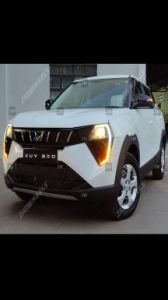Explore all New Cars of 2024
 In 10 Pics: Mahindra XUV 3XO Mid-Spec MX3 Variant Detailed
In 10 Pics: Mahindra XUV 3XO Mid-Spec MX3 Variant Detailed

The electric cycle segment has been picking up pace over the last couple of years. This relatively unknown genre is now one of the most popular options in the cycle space, and there’s good reason for that. E-cycles offer a number of benefits over conventional cycles. It also caters to a broader audience, thus making them the preferred option. Even though you have a lot of options when it comes to buying an electric bicycle, there are a few things you must keep in mind.
Motor placement
Motor placement is quite crucial for the performance of an e-cycle. There are three different types of motor placements, each with its own set of benefits. So choose wisely.
Rear hub motors are the most common of them all. They offer better traction compared to a front-wheel-drive system. As a result, these systems are more popular amongst MTBs, which require better grip off-road. The EMotorad EMX is one such example.
Front hub motors, on the other hand, offer better weight distribution, making them better handlers. They are more suitable for city communes but difficult to repair. Hub motors have zero moving parts aside from their bearings, meaning they are easier to maintain. While most companies prefer using rear hub motors, you could get a front hub motor conversion kit and slap it onto your regular bike. These kits can cost anywhere between Rs 45,000 to Rs 60,000, depending on the quality.
Mid-drive motors are known for higher performance and torque output when compared to a traditional hub motor. This system drives the crank, instead of the wheel itself, thus multiplying its power and allowing it to better take advantage of the bike's existing gears. It proves to be quite effective for high speeds on flat roads and while climbing steep inclines. Hero recently joined hands with Yamaha to co-develop E-cycle Motors.
Pedal power assistance
Most e-cycle hub motors have a maximum output of 250 watts. The motor is designed to cut off its assist as soon as you reach 25km per hour. There are two main types of power assistance:
Torque sensor pedal assist:
This system uses sensors to determine how much force is being applied to the pedals. The harder you push down, the more power assistance the motor provides. As the rider applies pedal force, torque sensors adjust the motor's output in real-time as a response, thus amplifying your every input.
It’s more intuitive as it adjusts the motor’s level of assistance to match the rider’s pedalling efforts. Because the system has no predetermined output at any given PAS level, it conserves battery power, thereby increasing battery life and range. The Ride Scoozy Torque 1, which is available overseas, features a torque sensor.
Cadence sensor pedal assist:
The motor provides power regardless of your pedalling speed and usually kicks in after a few milliseconds. E-cycles with cadence sensors are generally guaranteed to provide riders with consistent power and assistance.
The motor always provides the same power level, depending on the setting you choose. That said, cadence sensors are known to be a bit jerky and counterintuitive. Constant use of the system also tends to drain the battery a lot quicker. E-cycles like the Lectro Electric C8 come with a cadence sensor.
Battery range and charging:
Battery capacity is yet another feature you must keep an eye out for. Most e-cycle batteries
last between 40km to 80km – enough to cover an average journey. Depending on the battery, it can take three to six hours to fully charge. We’d suggest choosing e-cycles with larger batteries with enough juice to cover your daily commutes. Positioning of the battery also matters as frame-mounted batteries are a lot harder to remove and charge. Rather, opt for e-cycles like the BattRE Electric Mobility Montra with external battery packs. Removable batteries are easier to dismount and recharge.
E-cycles with throttle:
Entry-level e-cycles offer the bare minimum to keep costs in check. So most budget e-cycles come with pedal assistance but miss out on a throttle. A throttle can help you get up to speed if you're stuck in traffic or if you're tired from pedalling. So we think it’s an absolute must if you’re planning to ride your bike in city traffic.
Have a good suspension setup
Potholes and uneven surfaces are common on Indian roads, so a good suspension setup could go a long way. If you love riding off-road, a dual suspension setup is a must. It offers better control and traction while cornering, and even braking. A good suspension set will allow you to ride faster on rough, flat or steep roads.
Even if you stick to the tarmac, we’d suggest going for at least a front suspension setup with a fork lockout feature. Lock the fork if you hit pristine tarmac, and unlock it when you come across some rough roads. The Toutche Electric Heileo M100 may make a lot of sense in this case.
As we wind up, I’d also like to point out that a TFT display with a host of information could prove to be quite beneficial on e-cycles, as it reads out information like trip metre, odometer, speedometer, available range, battery charge indicator, ride time, clock, voltage etc. But if you’re on a budget, you’d most likely have to make do with a generic module, which features an on/off button, a battery charge indicator (low to high), and modes to control pedal assist.
Picking features based on your usage may be the best way to go while buying an e-cycle.
India's largest automotive community